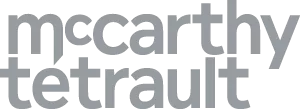- with readers working within the Banking & Credit and Retail & Leisure industries
- with Senior Company Executives, HR and Finance and Tax Executives
- with readers working within the Property industries
On February 28, 2025, the Financial Transactions and Reports Analysis Centre of Canada ("FINTRAC") released guidance (the "Guidance") and forms of reports (the "Forms") for the new sanctions reporting obligation imposed by amendments (the "Amendments") to the Proceeds of Crime (Money Laundering) and Terrorist Financing Act ("PCMLTFA") and the Proceeds of Crime (Money Laundering) and Terrorist Financing Suspicious Transaction Reporting Regulations (the "STR Regulations") issued thereunder. As discussed in our client alert last year when a draft of the Amendments was first released for public consultation, Evasive Maneuvers – New Reporting Obligations and Enforcement Tools for Canada's Economic Sanctions Regime, the Amendments greatly expand the existing reporting requirements under the STR Regulations to require regulated entities to report on property directly or indirectly owned or controlled by sanctioned persons (the "Reporting Obligation").
Finally, all FINTRAC reporting entities now have guidance from the regulator with respect to the new reporting requirements relating to sanctioned property. Previously known as terrorist property reports ("TPRs"), FINTRAC has coined the new term, "Listed Person or Entity Property Report" to capture a broader base of sanctioned property.
The Guidance and Forms provide helpful insights into FINTRAC's views on the scope of the new Reporting Obligation, and how it is being implemented. In this client alert, we review some of the key concepts covered in these materials and possible pitfalls businesses subject to the Reporting Obligation may come to face.
Scope of the Reporting Obligation
The Amendments, which have already been implemented in part, amend subsection 7.1(1) of the PCMLTFA to trigger the Reporting Obligation whenever a FINTRAC reporting entity is required to make a disclosure under the relevant Canadian economic sanctions regime, which include those regimes implemented under the Criminal Code, United Nations Act, Special Economic Measures Act ("SEMA") and the Justice for Victims of Corrupt Foreign Officials Act (Sergei Magnitsky Law) ("Magnitsky Law").
For example, if a financial institution identified property in its control that was owned by a person listed under the Special Economic Measures (Russia) Regulations (the "Russia Regulations", under which Canada's sanctions regime on Russia is implemented), that would trigger the disclosure obligation under subsection 7(1) of the Russia Regulations, which reads as follows:
7 (1) Every person in Canada and every Canadian outside Canada must disclose without delay to the Commissioner of the Royal Canadian Mounted Police
(a) the existence of property in their possession or control that they have reason to believe is owned or controlled, directly or indirectly, by a person listed in Schedule 1 [of the Russia Regulations] or by an entity owned or controlled by a person listed in that Schedule; and
(b) information about a transaction or proposed transaction in respect of property referred to in paragraph (a).
This, in turn, would trigger the Reporting Obligation pursuant to subsection 7.1(1) of the PCMLTFA, such that the reporting entity must also file a report with FINTRAC regarding this property. In this way, the Reporting Obligation does not generally expand the types of incidents that trigger reporting, but does duplicate the reports that are required for the same property.
Though there is very limited guidance from Global Affairs Canada on when the reporting/disclosure obligations imposed under Canadian sanctions laws are triggered, the Guidance does helpfully explain some of the key concepts that could trigger a Reporting Obligation for sanctioned property to FINTRAC. For example, the Guidance lists examples of property for purposes of the Reporting Obligation, which covers broadly any vehicle that holds value (such as casino tokens, deeds, insurance policies, registered or non-registered accounts) or anything that can be owned or controlled by a person, explicitly including tangible and intangible things.
The Guidance also explains who is a listed individual or entity for the purpose of the Reporting Obligation, and provides links to resources provided by the Canadian government and the United Nations that identify listed persons.
Application of Canada's Broad Ownership and Control Rules
We note that SEMA and the Magnitsky Law both include deemed ownership rules that cause property of entities controlled by listed persons to be deemed to be owned by the listed persons. As a result, property that is deemed to be owned by listed entities would also trigger disclosure obligations under the regulations issued under both SEMA and the Magnitsky Law, and therefore could trigger the Reporting Obligation as well. Importantly, these deemed ownership rules use a broad concept of control that goes beyond a simple 50% test..
Specifically, all property owned, held or controlled directly or indirectly by an entity is deemed to be owned by a person if any one of the following apply:
- the person holds, directly or indirectly, 50% or more of the shares or ownership interests in the entity or 50% or more of the voting rights in the entity;
- the person is able, directly or indirectly, to change the composition or powers of the entity's board of directors; or
- it is reasonable to conclude, having regard to all the circumstances, that the person is able, directly or indirectly and through any means, to direct the entity's activities.
As such, when conducting required screening, freezing and reporting (including reporting to FINTRAC) related to sanctioned persons and their property, businesses need to assess whether their counterparty or any person falling within the three control tests set out above in respect of their counterparty is named on any of the SEMA or Magnitsky Law lists. For more details on the deemed ownership rule, please see our prior client alert from when the rule came into force: "Deemed Ownership" Rule Now in Force: Addressing Heightened Canadian Sanctions Risk.
Next Steps in Phases
The Guidance announces a phased implementation of the Reporting Obligation, with various aspects of Canada's sanctions regimes being made subject to the Reporting Obligation at different times.
Specifically, property owned or controlled by persons listed under all regulations issued pursuant to the United Nations Act became subject to the reporting obligation on March 2, 2025. This obligation adds to the existing obligation, as described by the Guidance, "with respect to property owned or controlled by a terrorist group as defined in subsection 83.01(1) of the Criminal Code, or a listed person as defined in section 1 of the Regulations Implementing the United Nations Resolution on the Suppression of Terrorism."
On October 1, 2025, the Reporting Obligation will be expanded further to apply to property that is owned , held or controlled by or on behalf of a person listed under the regulations issued under SEMA or the Magnitsky Law.
Other Key Considerations for Reporting Entities
In addition to the matters discussed in the Guidance, there are additional considerations driven by Canada's sanctions regime that FINTRAC reporting entities should keep in mind.
For example, the disclosure obligation related to the possession of property of a terrorist group under the Criminal Code is only triggered when it is known to the reporting entity that the property in their possession or control is that of a terrorist group. However, under Canadian sanctions, the disclosure obligation is broader so that is applies when the reporting entity has a "reason to believe" that the property is owned or controlled by a sanctioned person. FINTRAC reporting entities should pay close attention to this distinction when they are considering whether or not certain property might trigger the Reporting Obligation.
Additionally, as we discussed in our earlier client alert, this Amendment, along with other recent changes to the PCMLTFA, has introduced non-criminal enforcement to Canada's sanctions regime. Failure to abide by the Reporting Obligation triggers the possible application of administrative monetary penalties as an enforcement measure. This differs greatly from the disclosure requirements in Canada's sanctions regimes, which are subject to criminal enforcement. This development could be viewed as bringing Canada's sanctions enforcement regime into somewhat closer alignment with its allies like the United States, where civil penalties are common and provide regulators an enforcement tool as an alternative or in addition to pursuing criminal prosecution and having to deal with all the challenges that entails for enforcement authorities.
Just like its predecessor TPRs, although the Forms can be downloaded online, the completed Listed Person or Entity Property Reports must be submitted by fax or regular mail, presumably for the same security reasons as was the case with TPRs.
To view the original article click here
The content of this article is intended to provide a general guide to the subject matter. Specialist advice should be sought about your specific circumstances.





